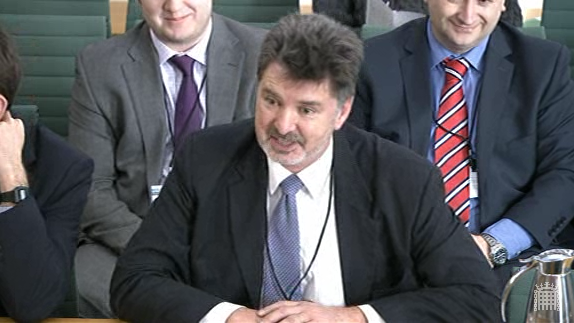Back in November 2013 – one year after PCCs were first elected – CoPaCC, Policing Insight’s owner, published its first Thematic. Working with Grant Thornton, the UK’s largest police auditor, we examined how well Police and Crime Commissioners met their statutory responsibility to be transparent in their work. As I subsequently explained to Keith Vaz whilst giving evidence on this topic to the House of Commons’ Home Affairs Select Committee, very few PCCs emerged with credit from this research.
Now in May 2015, one year before the second PCC elections, CoPaCC is starting to re-examine PCCs’ ability to meet their statutory responsibilities on transparency, and has recently reviewed the transparency of a first sample of PCCs. We’ll be conducting a more comprehensive review this summer, and aim to publish our detailed findings in September 2015.
I’d like to take this opportunity to invite every PCC’s office (OPCCs – plus MOPAC, their London equivalent) to provide CoPaCC with their own analysis of how they believe their PCC meets their statutory transparency obligations. To take part OPCC’s should simply contact me, Bernard Rix – email [email protected]. I will then provide those OPCCs with further relevant details. Details can also be found in our launch announcement.
November 2013: past PCC transparency
PCCs across England and Wales have to publish certain specified information to allow the public to hold them to account. CoPaCC’s original “PCCs and Statutory Transparency” Thematic [Subscriber download] used, as its benchmark, the fifty detailed transparency factors identified by the Police Reform and Social Responsibility Act 2011 as this ‘specified information’, and set out in detail in the Elected Local Policing Bodies (Specified Information Order) 2011. These fifty can usefully be grouped into six statutory transparency ‘themes’, covering:
- who they are and what they do;
- what they spend and how they spend it;
- what their priorities are and how they are doing;
- how they make, record and publish their decisions;
- what policies and procedures govern the office of the PCC;
- public access to a register of interests.
We found that, at that time, none of the 42 OPCCs (including MOPAC) appeared to be fully meeting the transparency requirements set out in the Specified Information Order. Or, put another way, that every single PCC was, at that time, “breaking the law”. A more limited National Audit Office review of PCCs’ transparency, conducted around the same time, came to the same conclusion.
The most transparent OPCCs in November 2013 were: West Midlands; Humberside, Dyfed-Powys. We decided at that time against publishing any transparency ranking of the remaining OPCCs, instead inviting all PCCs to read, learn from and act upon our research.
May 2015: present PCC transparency
Earlier this month, I and a CoPaCC team examined a small sample of six PCCs’ current transparency. This ‘dip sample’ suggests that PCCs have indeed learned some lessons from CoPaCC’s earlier Thematic – but that many may still not be fully meeting their statutory transparency requirements. Does this mean that some are still breaking the law? Probably, yes – but it’s unlikely to mean that PCCs will be hauled up before the courts. However, if what we have seen in our sample is representative, and there are no further improvements, it might make for some red faces when the full CoPaCC “PCCs and Statutory Transparency – revisited” Thematic is published later this year. PCCs, their offices’ chief executives, police and crime panels, plus wider stakeholders such as the Home Office and a future Home Affairs Select Committee – all will be interested in what this further review might conclude. All are cordially invited to play an active part in the review CoPaCC is now to undertake.
Summer 2015: further improving PCC transparency
CoPaCC’s approach from our foundation has been to work as a “critical friend” – looking to identify and encourage good practice, whilst also providing honest and candid feedback that is grounded in objective evidence. We plan to continue with this approach. And that is why we are now inviting PCCs and their offices to provide us with their own assessment of their PCC’s statutory transparency.
We will combine this with our own, independent analysis over the summer, and only then publish our “warts and all” analysis. Our plan is to publish a full, transparent ranking of all 41 PCCs, plus MOPAC.
May 2016: the public’s assessment of their PCC’s transparency?
A PCC’s performance is assessed democratically by the public every four years in PCC elections. The next PCC elections are now less than a year away, in May 2016.
To make this democratic accountability effective, it is important that members of the public have access to reliable material which allows them to reach an informed view of their PCC’s performance. Transparency of relevant information is therefore a cornerstone of effective accountability and good governance.
If done well, the transparent provision of information about the PCC and their activities enables local people to better understand how well their PCC is delivering in their role. If transparency is demonstrably poor, the electorate can also draw their own conclusions.
CoPaCC’s “PCCs and Statutory Transparency” Thematic Report 2015 will provide an independent, objective and evidence-based analysis of PCCs’ transparency. It can help the electorate draw conclusions about their PCC’s effectiveness. It may even help them decide how to cast their vote.



[…] verbalizer, Bernard Rix, who lately gave evidence to the House of Commons’ Home Affairs Select Committee, is CEO of CoPaCC, the system for comparison operation of Constabulary and Law-breaking […]